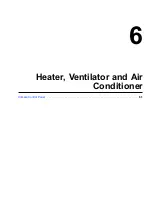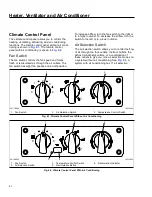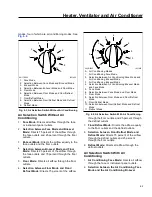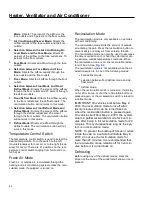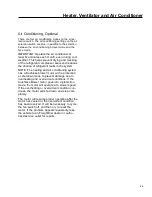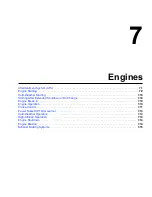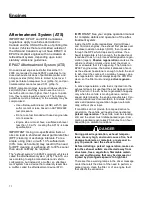
Engine Starting
For cold-weather starting, refer to "Cold Weather
Starting" later in this chapter.
Whenever you start an engine, watch for any signs
of engine problems. If the engine vibrates, misfires,
or makes unusual noises, turn the engine off as soon
as possible and determine the cause of the problem.
Frequently, engine damage may be avoided by a
quick response to early indications of problems.
NOTICE
When starting a vehicle equipped with a manual
transmission and clutch lockout switch, the
clutch pedal must be fully depressed during the
entire start sequence. Failure to do so can cause
the pinion to release and re-engage, which could
cause ring gear and starter pinion damage.
If a vehicle does not start on the first attempt,
make sure that the engine has completely
stopped rotating before reapplying the starter
switch. Failure to do so can cause the pinion to
release and re-engage, which could cause ring
gear and starter pinion damage.
Moving a vehicle with the starter and/or using the
starter to bump the engine for maintenance pro-
cedures is strictly prohibited. Use of these meth-
ods to bump the engine over or move the vehicle
can cause the pinion to release and re-engage,
which could cause ring gear and starter pinion
damage.
Ring gear and starter pinion damage caused by
improper starting procedures is not warrantable.
Pre-Start
NOTE: These pre-start steps apply to all en-
gines.
1.
Perform the engine pretrip inspection and daily
maintenance checks in
Chapter 11
.
2.
Set the parking brake.
3.
For manual transmissions, place the transmis-
sion in neutral and disengage the clutch.
For automatic transmissions, make sure the
transmission shift control is in neutral or park.
NOTE: On vehicles equipped with a neutral start
switch, the transmission must be in neutral be-
fore the engine can be started. For air start sys-
tems, check the air supply before starting the
engine. There must be 100 psi (689 kPa) of air
pressure available.
4.
Turn the ignition switch to the ON position
(
Fig. 7.14
). All the electronic gauges on the ICU
(instrumentation control unit) complete a full
sweep of their dials, the warning and indicator
lights light up, and the buzzer sounds for three
seconds.
A
B
11/08/2010
f470540a
NOTE: STOP engine light illuminates. Engine power
limited, speed limit of 5 mph (8 km/h)
A. DEF Warning Lamp (flashing)
B. DEF Lightbar (one bar flashing red)
Fig. 7.13, DEF Empty and Ignored Warning
09/12/2001
f610509
Fig. 7.14, Ignition Switch Positions
Engines
7.9

